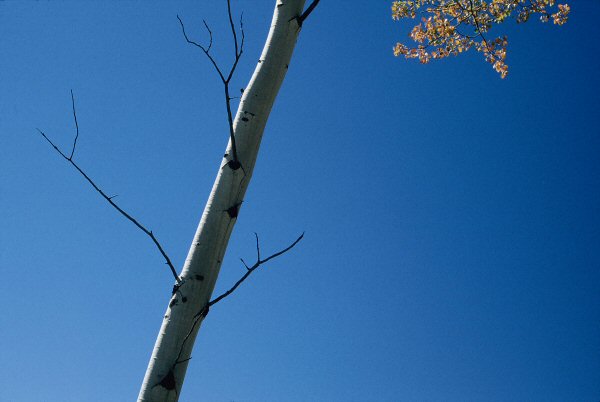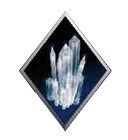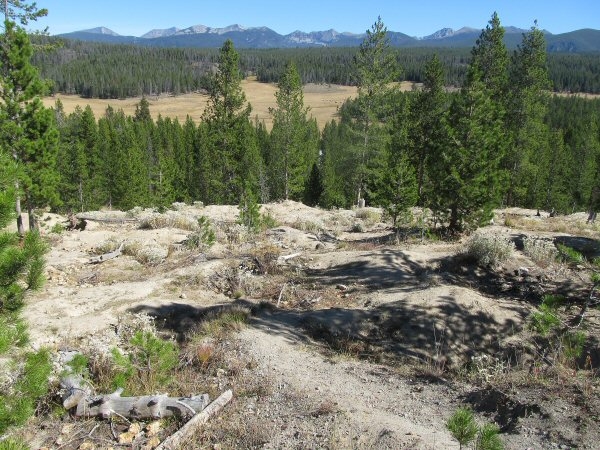
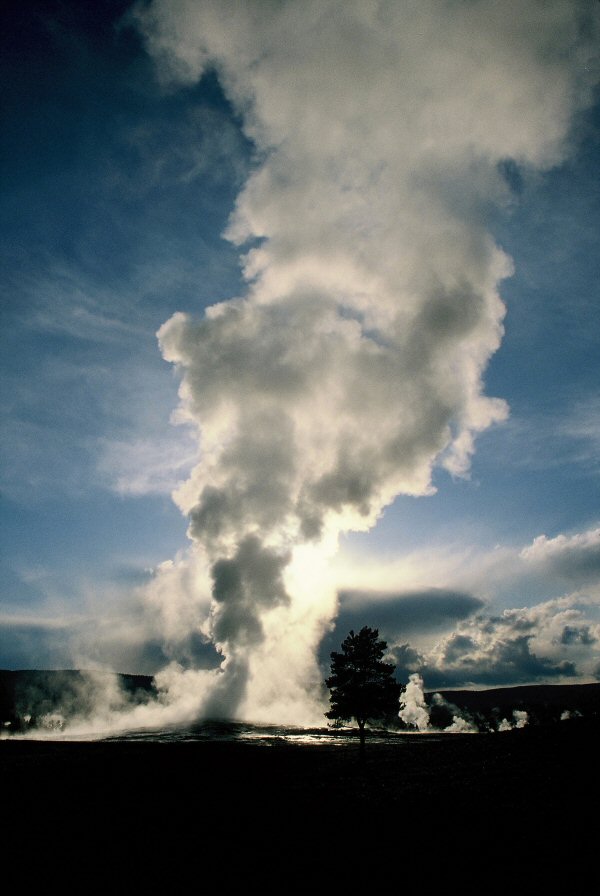
My Seattle rockhound friends announced that they were going to Montana and then on to South Dakota for some rockhounding, and did I want to join them? Immediately thoughts of famed Yellowstone National Park jumped into my mind.
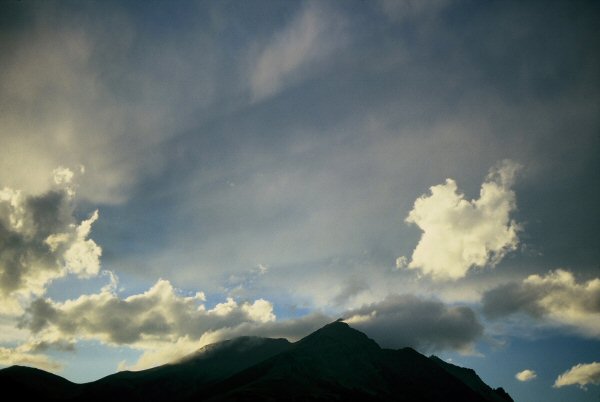
Though there’s no collecting within the park, there are hundreds of miles of trails through some of America’s best wilderness. The four winds move about the mountain tops and ragged peaks sigh fog out into seemingly infinite space.
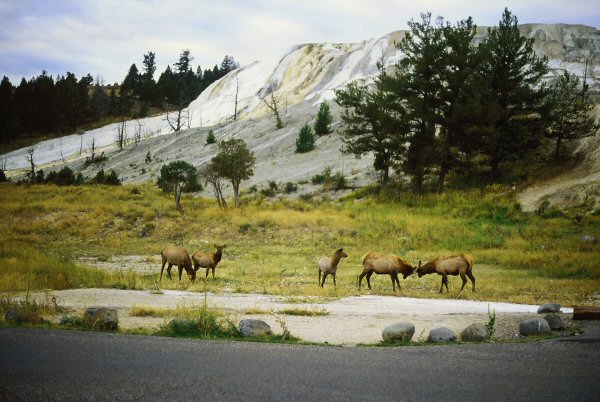
Besides the otherworldly geothermal features, the park is like a zoo without bars. Here young elk practice rutting beneath the steaming travertine terraces of Mammoth Hot Springs.
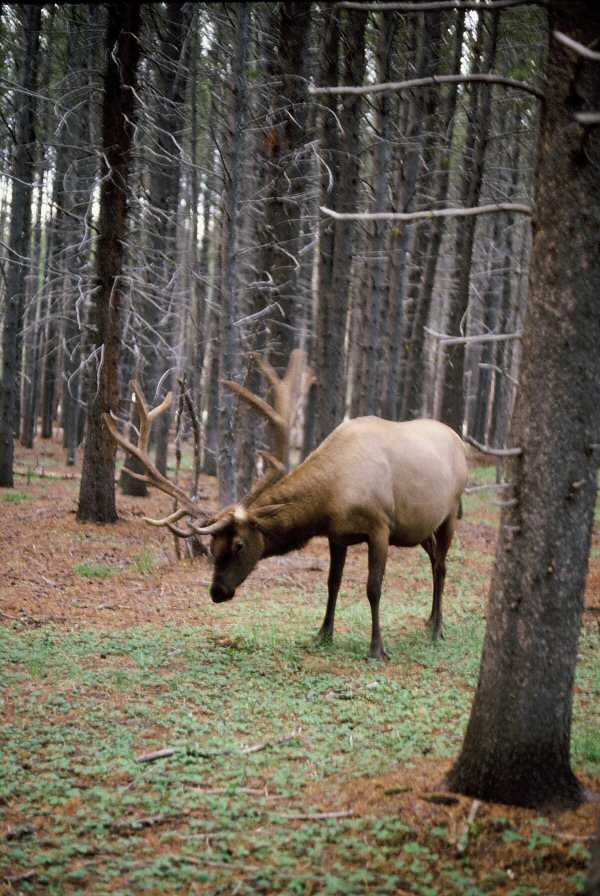
There’s nothing like the bugle call of a bull elk beneath the stars on a crisp Montana night.
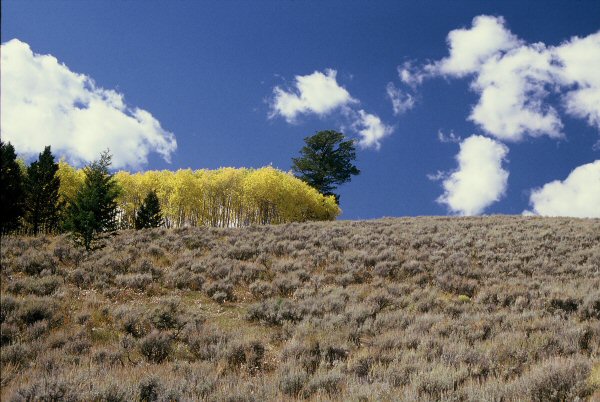
I decide to go for it! I’ll be happy just to be in the magical Montana high country once again.
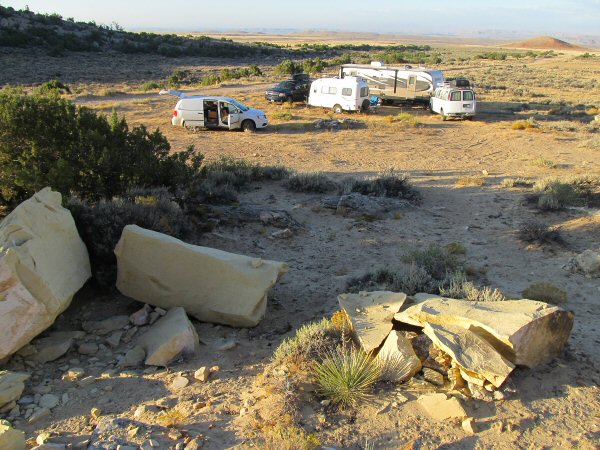
The plan is more or less Bear Canyon for fortification agate and fossils, maybe a side trip to the Yellowstone River for Montana Agate, and then on to Teepee Canyon for red fortification agate, and Fairburn agates. What’s not to like? Heading over to the east side of the state, my rockhounding buddies and I meet up at Bear Canyon, south of Billings by about 60 miles, and located in the Pryor Mountains. We camp at the mouth of the Bear. The red butte in the near distance is a remnant of the Jurassic Chugwater formation.
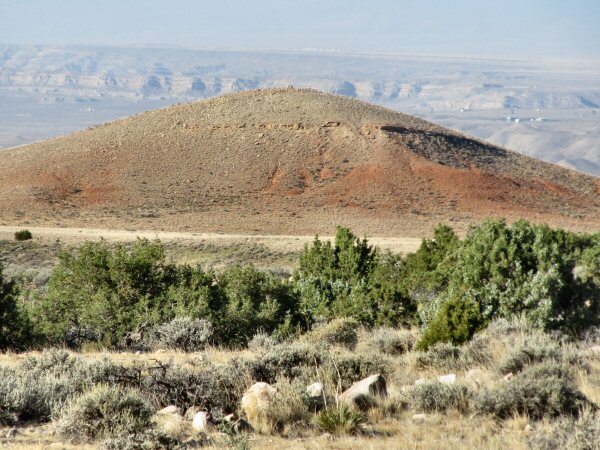
The red rock is not fossiliferous, but the lighter cap rock is, and it extends from the top of the butte, just above the thickest red rock outcropping, and on down the back side of the hill.

A few cottontails live in the red Jurassic soil on the side of the butte.
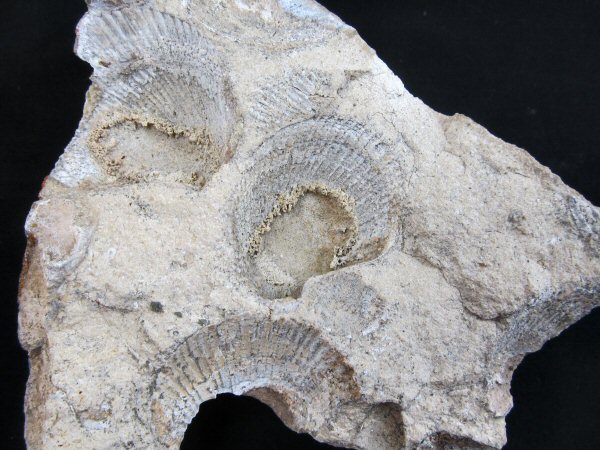
The light cap rock at the top of the butte looks barren, but if you split layers of it, you will find shell fossils.
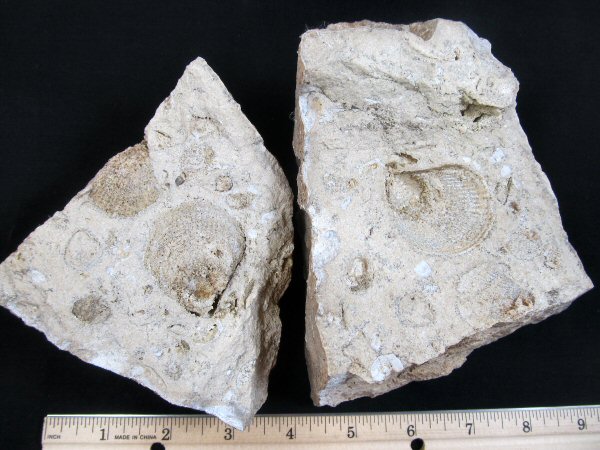
Here’s a nice positive and negative specimen.
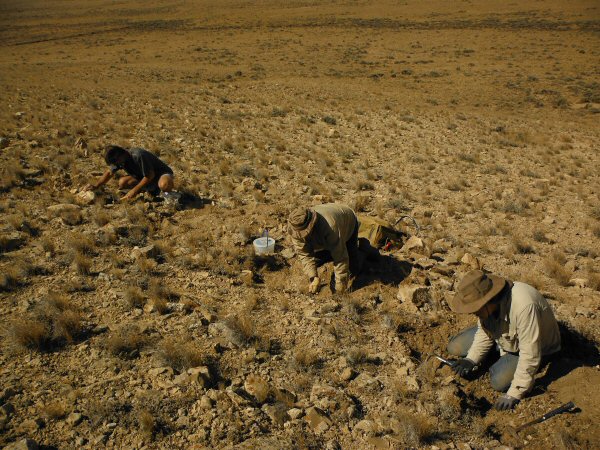
We had our best luck searching for coral on the more gentle slopes of the west side of the red butte. Small pieces were randomly around in the soil, but it did seem like there were lucky spots where there was a little more concentration of coral pieces.
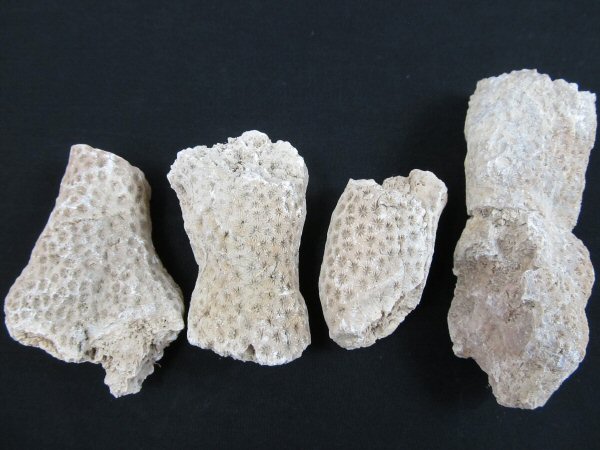
Thumb sized coral pieces from the west side of the red butte.

The surfaces of these corals showed very nice star shaped patterning.
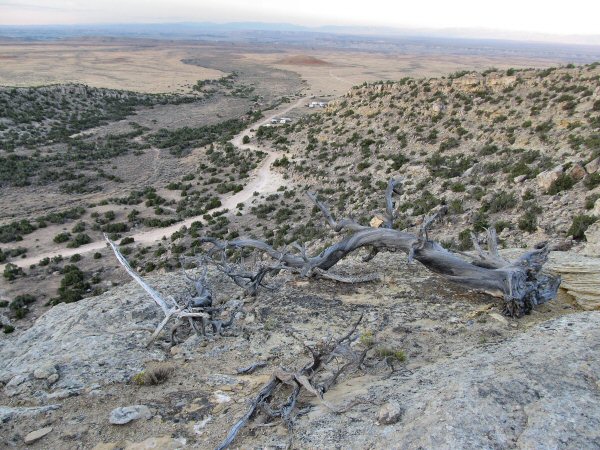
Time to hunt for the elusive Bear Canyon agate. From our camp, the road enters the main canyon. About a half mile up on the left is a side canyon coming in which we called “First Canyon”. You can begin to hunt the walls and floor of Bear Canyon at this point. Below the First Canyon, you do not seem to find much if any nodules.
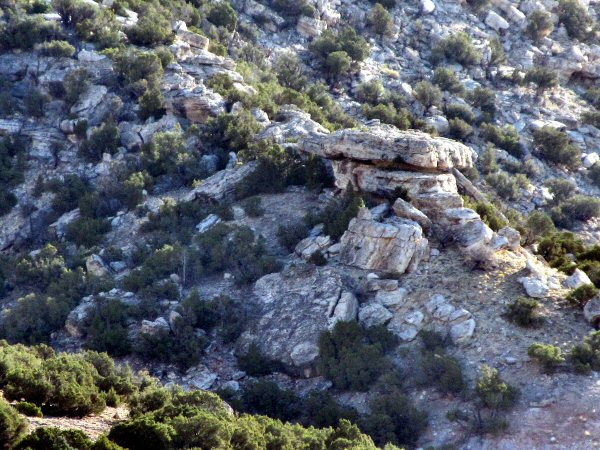
The mouth of “First Canyon” is marked by this feature which we called “Hat Rock”. Continuing up the ridge from the hat, Billings rockhound Doug True made an important find of a large concentration of Bear Canyon agate nodules about 10 years ago. He filled something like 10 five gallon buckets from just this one dig alone.
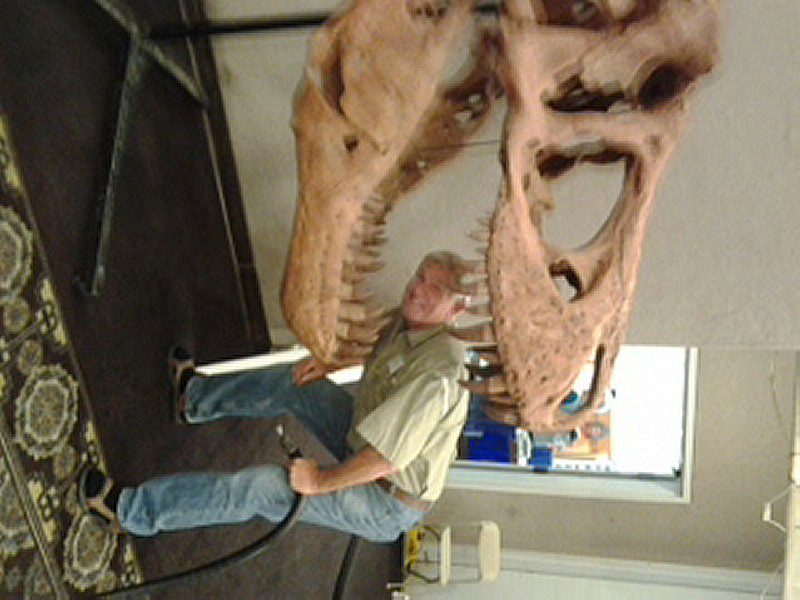
Here’s Doug, fending off a T-Rex attack at a Concord, California gem show. (wink)
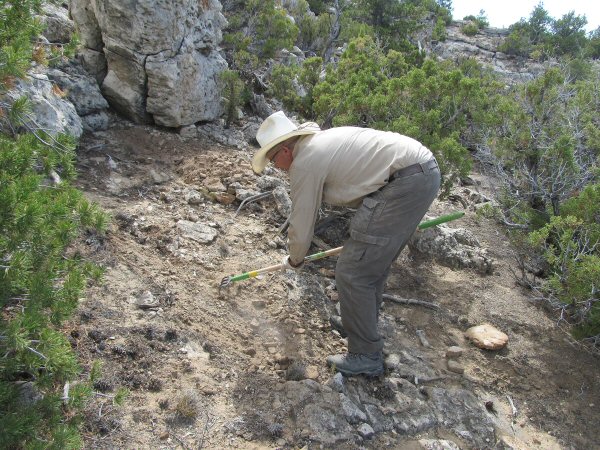
The Bear Canyon nodules seem to crop out in certain areas below the cap rock of the canyon rim. Here, Kevin Rust rakes through the soil below the rim searching for agate.
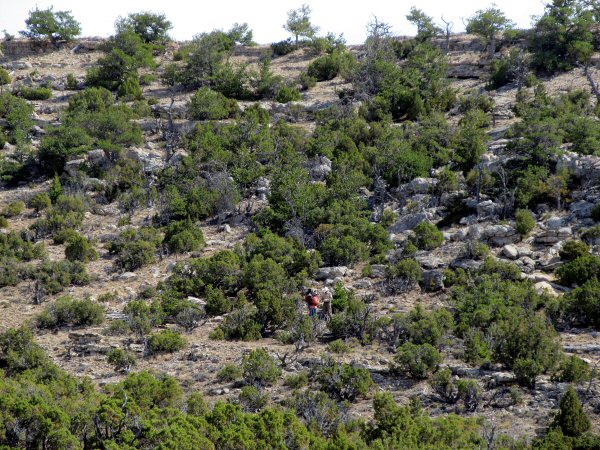
The nodules have been weathering out from below the rims and rolling downhill for thousands of years. You find them in drainage channels, and erosional features all the way down to the main canyon floor. Here our group searches small meandering runoff flow channels below the rims of “First Canyon”.
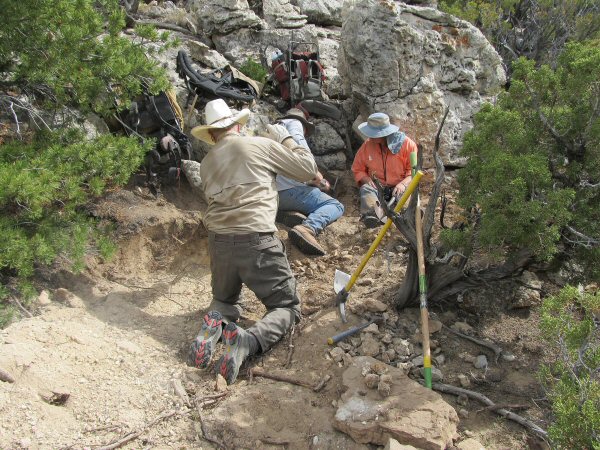
After a bit, the Seattle gang settles in to dig out an area up near the head of First Canyon, where the Billings rockhounds have previously done some digging.
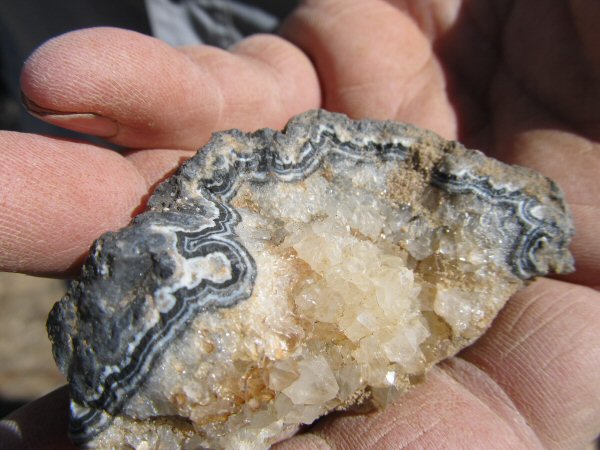
With determined effort, Kevin McDonald scores a nice agate. It’s a partial nodule but what a beauty!

In the evenings, we were treated to a string of nice sunsets which were so pretty that we even heard locals commenting on them the next day!
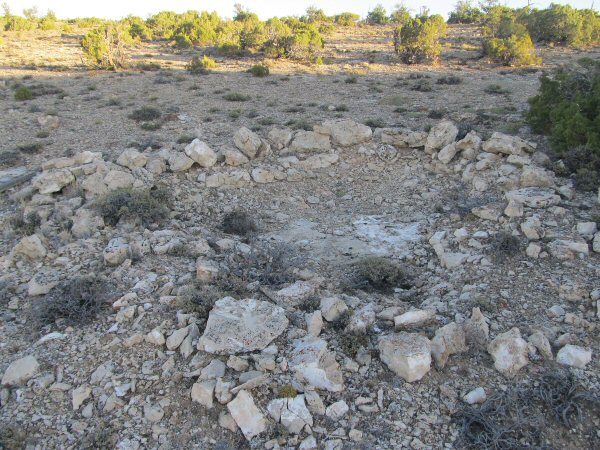
One morning, I decide to explore the gently sloping south facing shoulders of the Pryors, curious to see if any nodules occur outside of Bear Canyon. I don’t find any, but I do spot this old foundation of a camp, or homesite tucked up on the shoulders of the south Pryors. Beautiful view, but with the nearest 4×4 road several miles off it’s definitely a walk-in site.
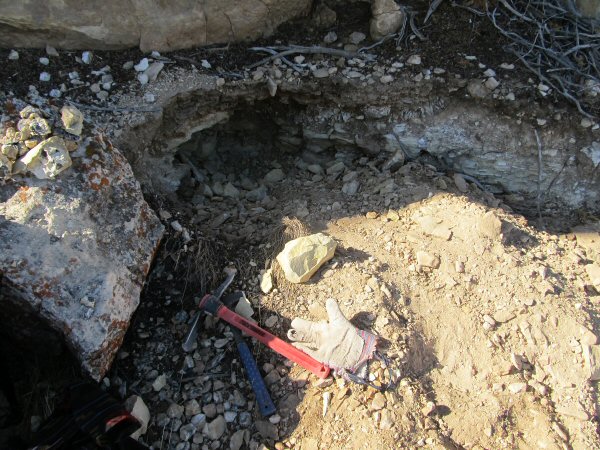
It seems like the nodules only occur within the Bear Canyon, but it should be noted that they do occur on both sides of the canyon walls. Here, I’m digging on the East side of the main Bear Canyon, just across from “First Canyon”, at the lower terminus of the rimrock, where the nodules are squeezing out in a little seam just below.
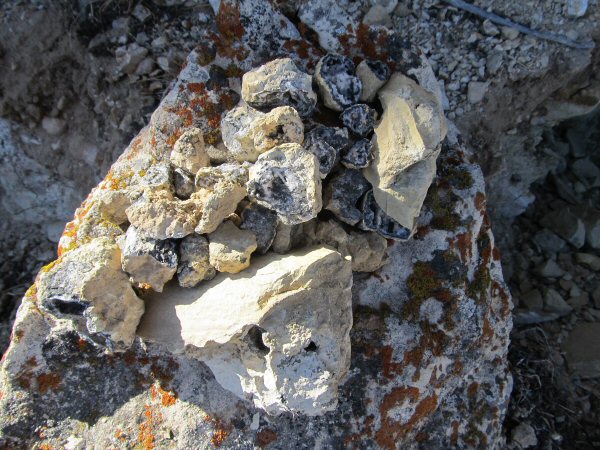
I get a small pile of nodules in just a short time. Many of them do not have the prized fortification inside. (I’ve cracked them to see with the intent of windowing any nice ones) But one out of every 10 or so does show some nice pattern.
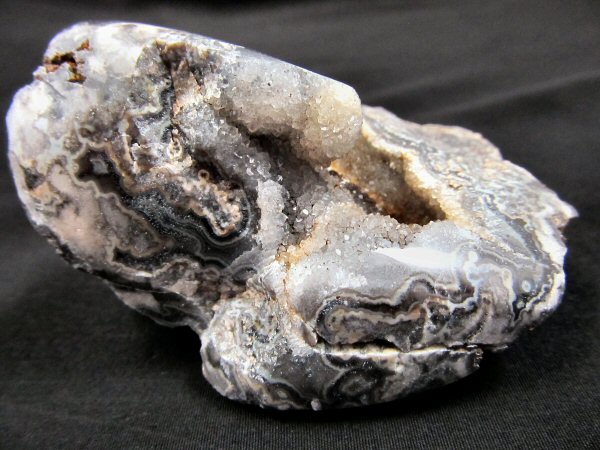
Here’s some nice ones that I dug out and windowed. The most sought after nodules are the ones with black and white fortification pattern. This one has a druzy quartz geode center as an added bonus.
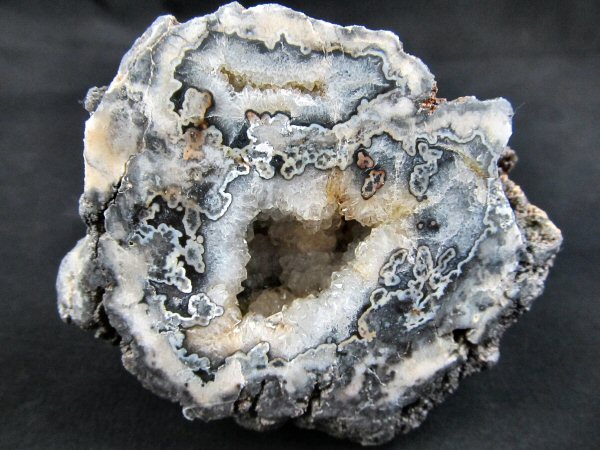
A striking double geode with a little bit of white lining to emphasize the quartz crystal cavities.
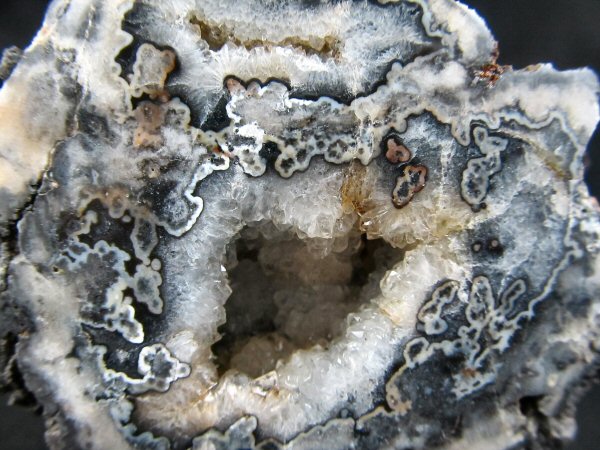
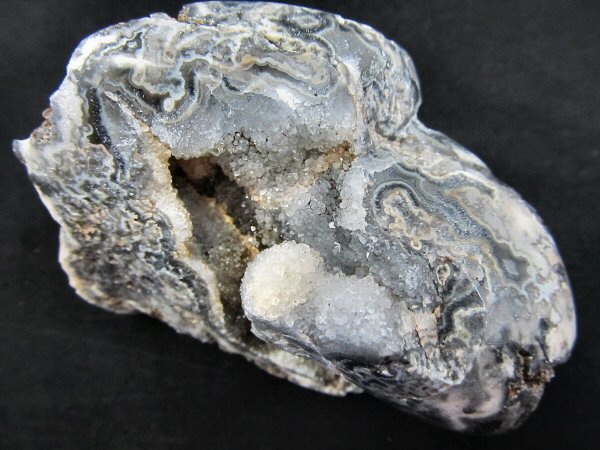
Another nice druzy!
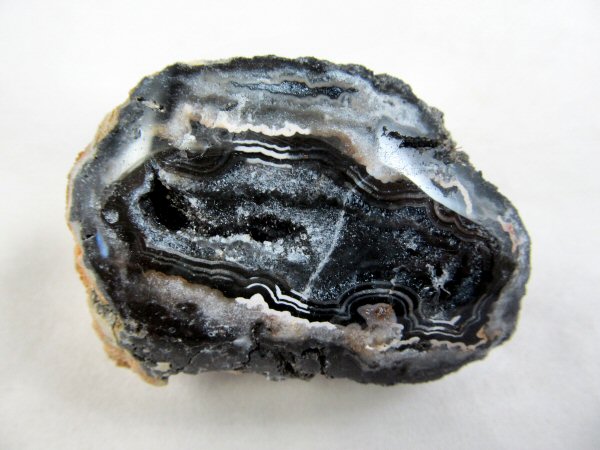

Here’s one of my favorites: It’s a little short on fortification, but makes up for it with a marvelous black druzy botryoidal interior, and an extra large size that made even veteran agate hunter Doug True whistle in surprise!

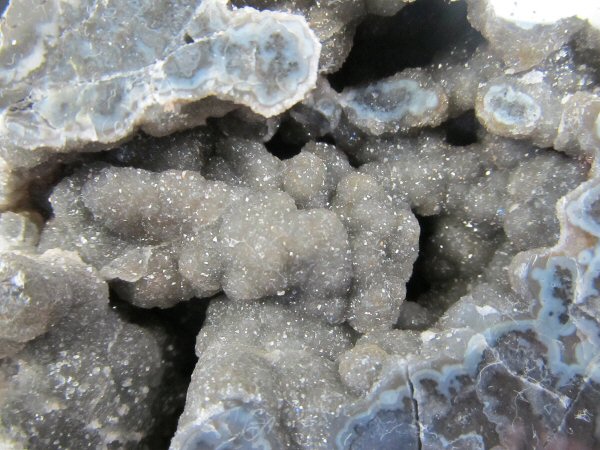
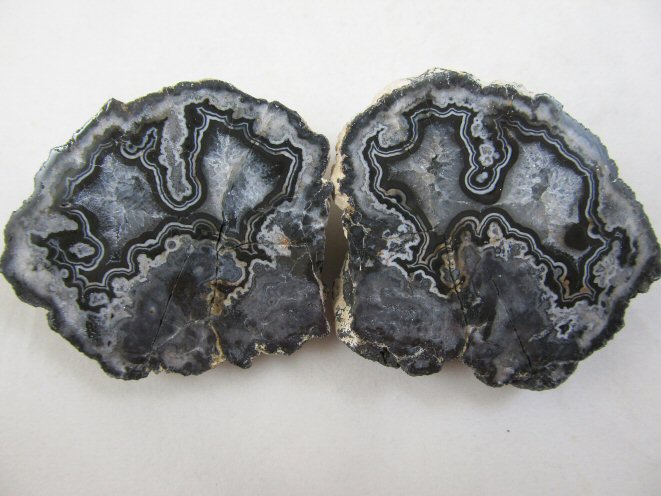
A nice Bear Canyon Pair.
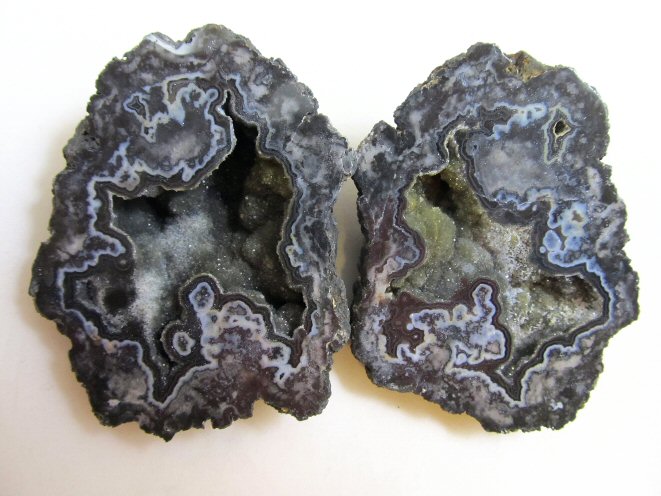
Another nice pair with black druzy geode center.

Just cracking nodules at the doorway of the heart.
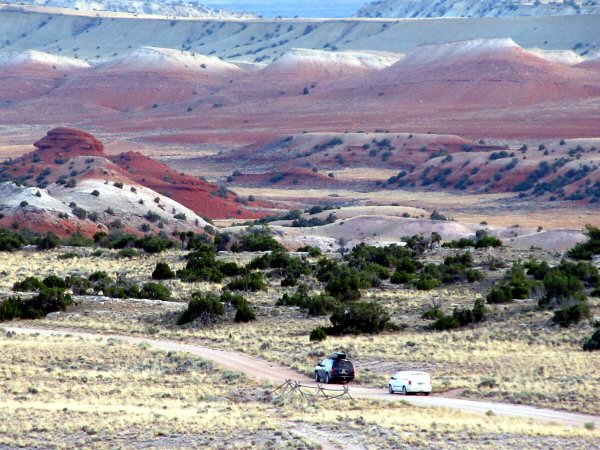
On the Helt Road, to the nearby oyster beds.
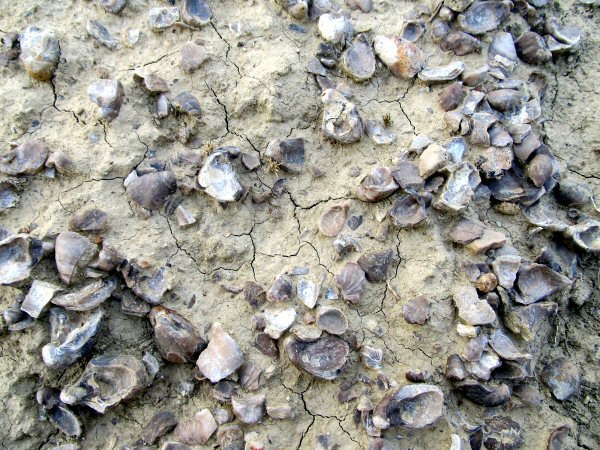
The soil here is totally littered with fossil oyster shell fragments.
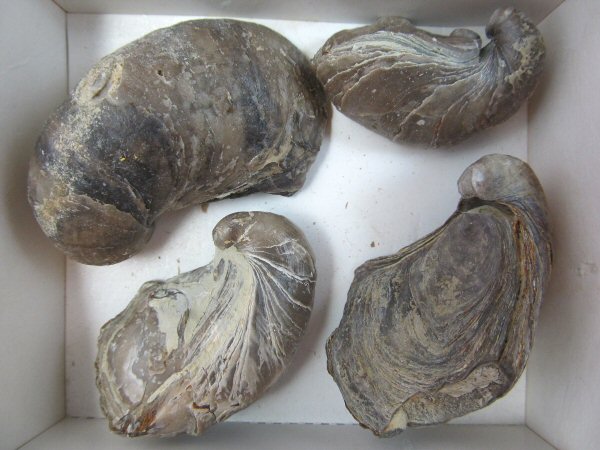
A patient search will turn up oysters that are largely, if not fully complete, and have both valves present!
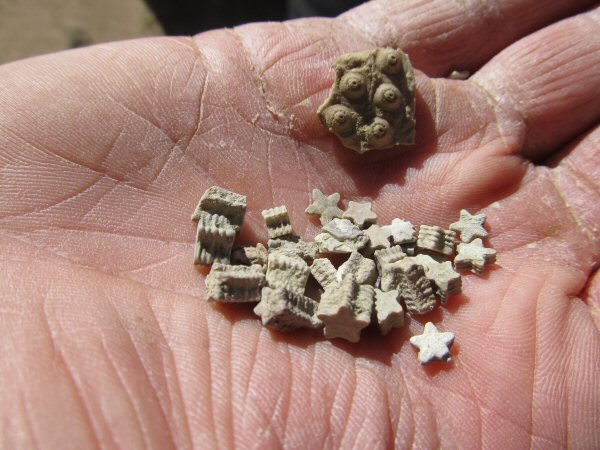
Also scattered in the soil are tiny fragments of pentacrinus, the star crinoid, shown here with a fragment of an ancient sea urchin shell.
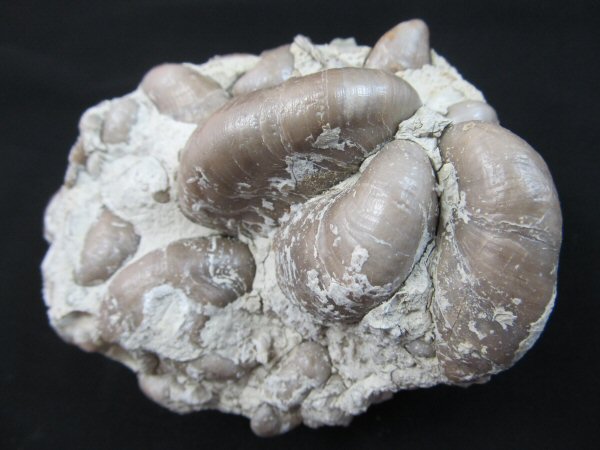
In some areas, rocks of lithified clay are weathering out containing multiple oysters. This piece had a beautiful arrangement – a trident of three oysters bound together for eternity.
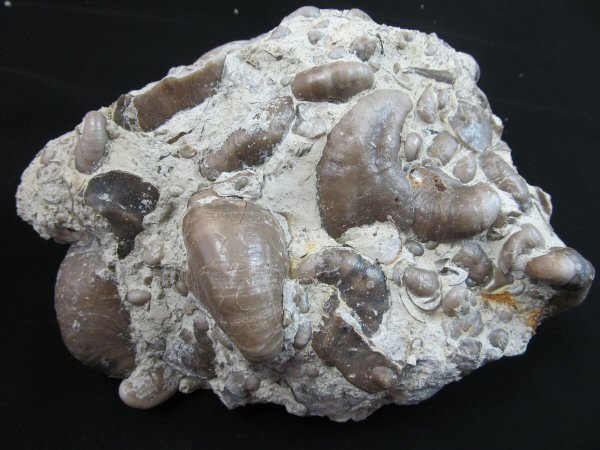
How about this whopper. I cleaned the multiple oyster chunks I collected by dunking them in muriatic acid for about 5 seconds, and then neutralizing them in a bucket of water. The resulting beautiful display specimens had shiny, crust free oyster shells popping off of lighter clay matrix, as if they had been professionally prepped!

On our way back to Bear Canyon from the Oyster Beds, we explore up the Red Pryor Mountain Road. There are a couple old mines up there and a site where you can dig for Red Pryor Mountain agate.
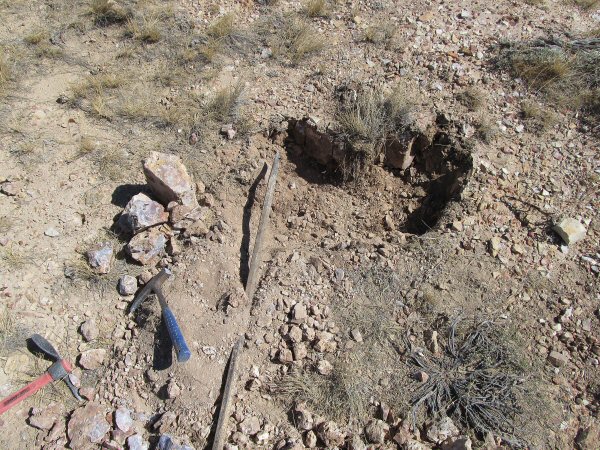
The red agate dig is about a half mile up Red Pryor Mountain Road on the left. There is a flat landing with lots of agate in the soil, and the dig site pictured above is just downhill from the landing.
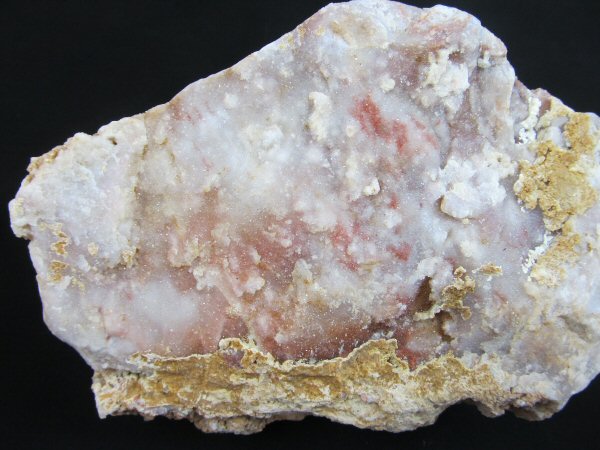
One of the sweet things about some of the agate here is the nice bright sparkly druze which isn’t conveyed well by the camera, but is rockin when you see it in the sunlight with your own eyes!

Nice double rainbow over Bear Canyon upon our return.
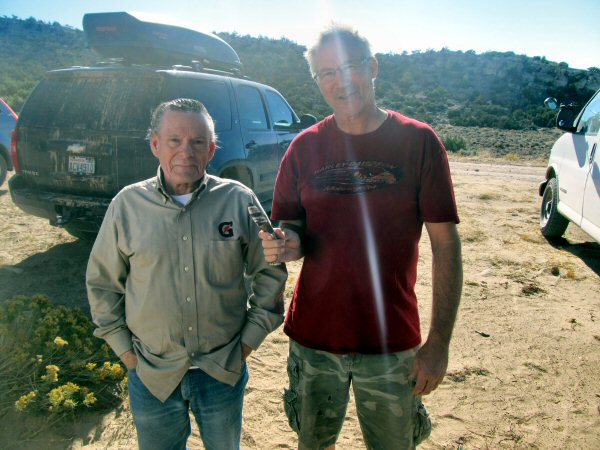
In camp, we’re joined by local rockhound Leroy Pickens (on the left). Leroy is a master stone knapper.
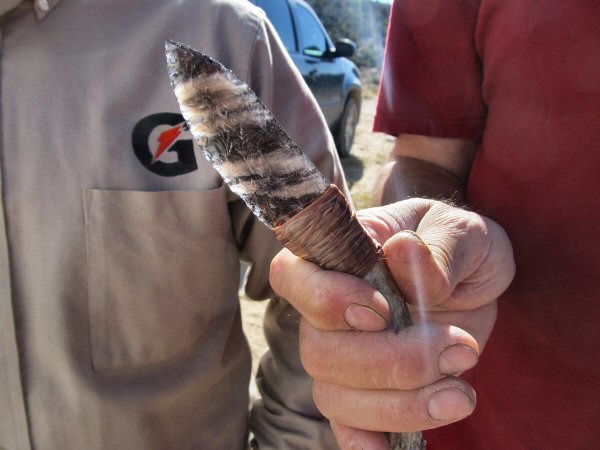
A close-up of a double flow obsidian knife that Leroy has made.
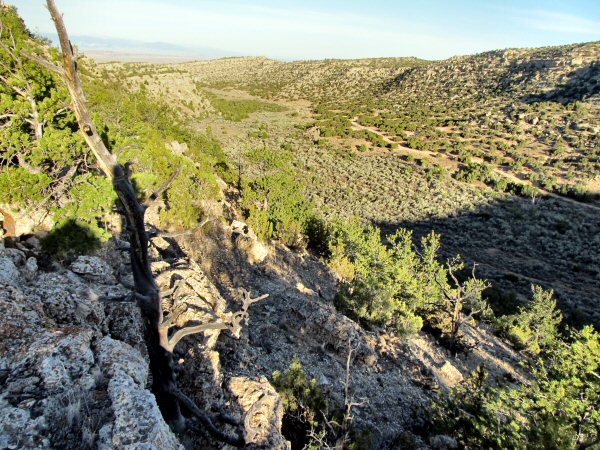
The next morning, we say goodbye to Bear Canyon. I have to return to Oregon, and the group is moving on to Teepee Canyon in South Dakota.
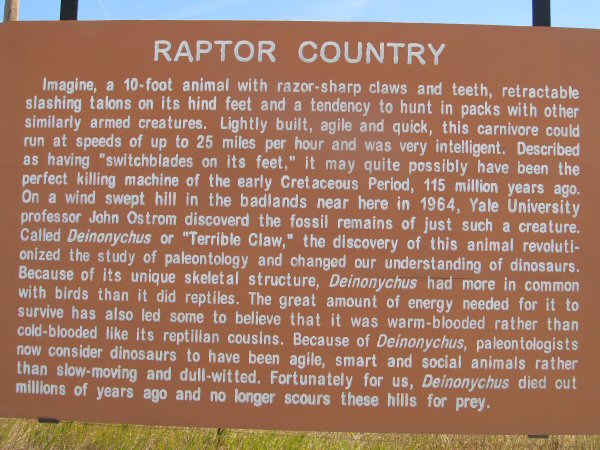
A sign on Highway 310, heading north to Billings.
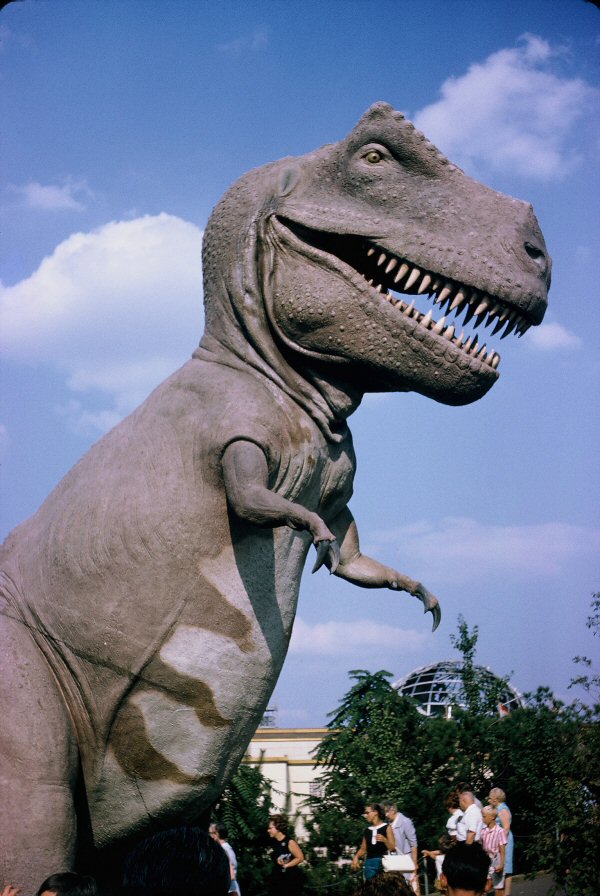
This life sized T-Rex provides a whimsical vision that is appropriate for the land I’m driving through now, even though this artist’s conception was an installation at the 1964 World’s Fair in New York!
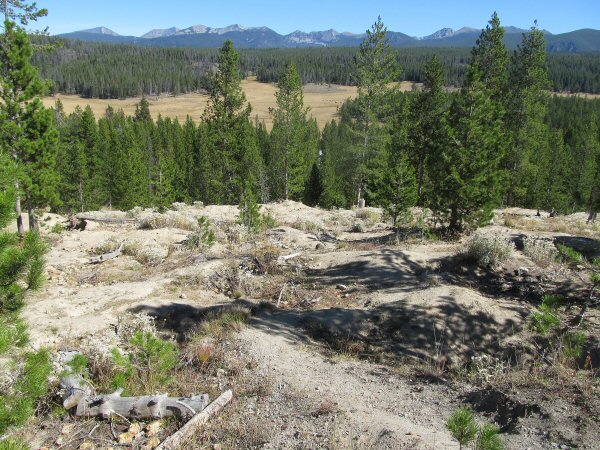
On my way back west, I can’t help but to stop at Montana’s famous Crystal Park and dig around for part of a day, looking for the sought after varietal quartz crystals that come from here. In the photo, the cratered moonscape of Crystal Park commands a view of a lovely alpine valley, with the East Pioneer Mountain Range on the horizon.
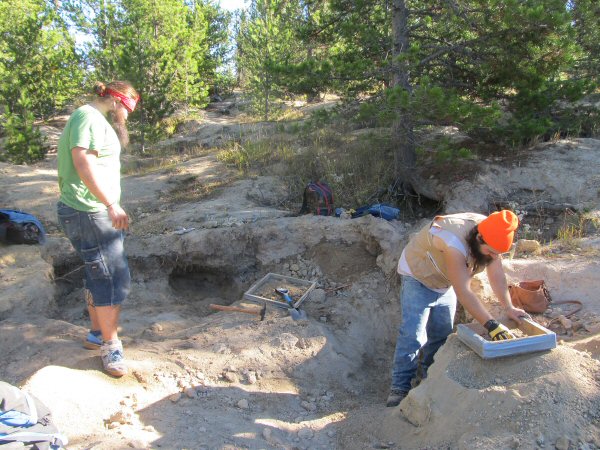
On the back side of the hill, a couple of diggers from Washington State are already hard at work. Screening the soil really does help here.
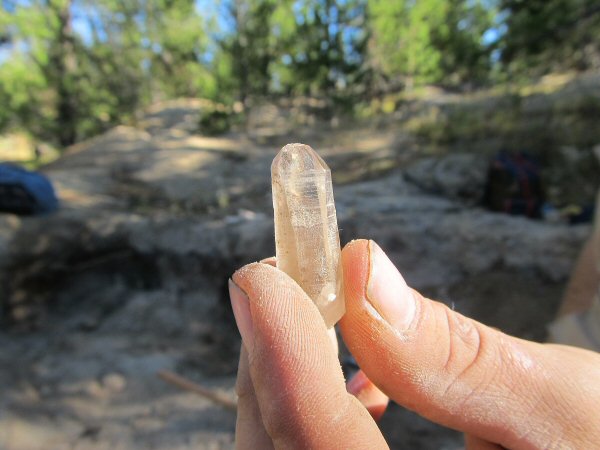
They’ve each got a little to show for the morning’s work.
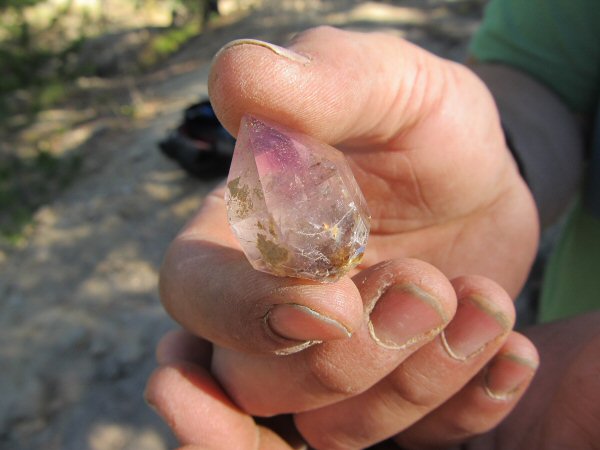
A nice little amethyst head pops out!

In the heat of afternoon, a group of deer move in and lay down in the pits, seeking the coolness of the shade and the shadowed soil.
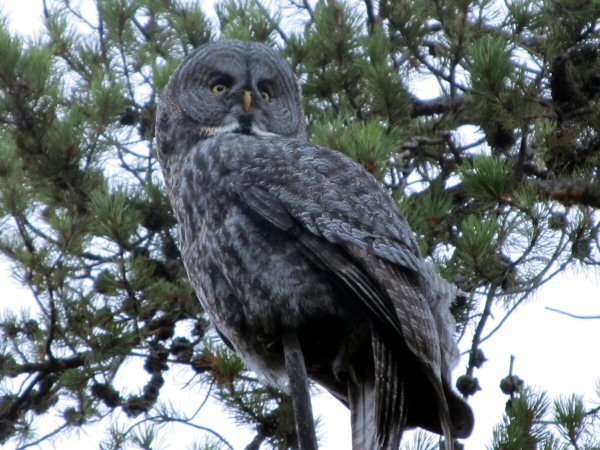
In the evening, my camp is visited by a Great Gray Owl.
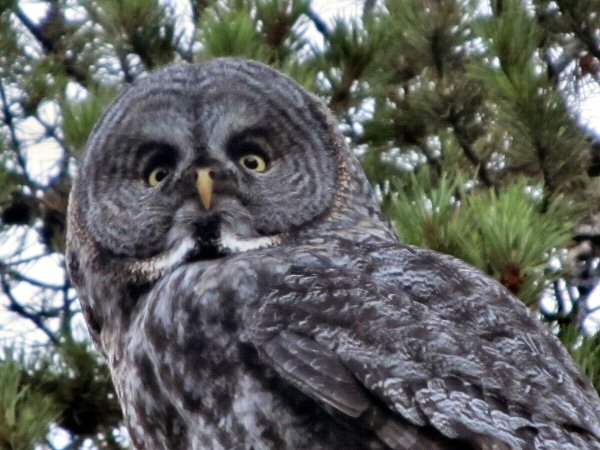
It fixes me with a fierce glare, and I’m glad I’m too big to carry off!
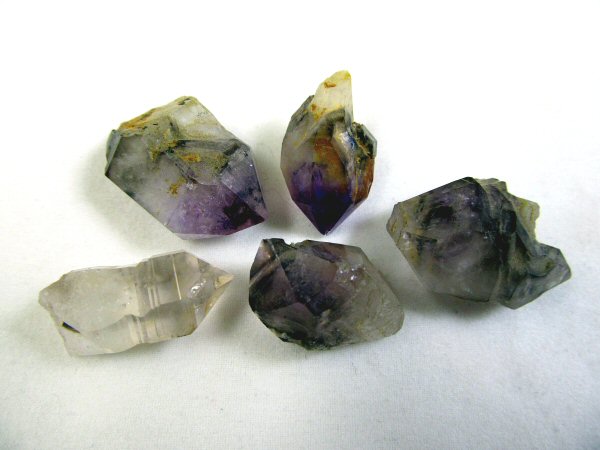
A handful of little treasures that I pulled out of the park.
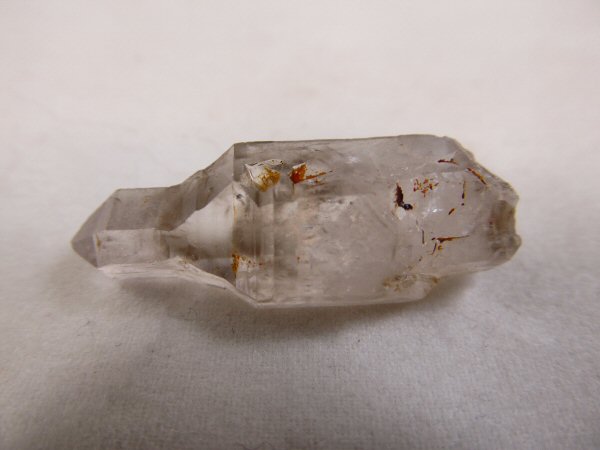
A pagoda crystal.
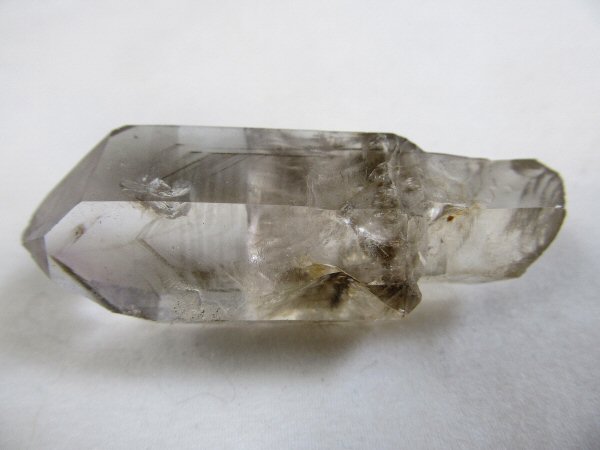
My best scepter with light amethyst tint at the tip, and several smoky phantoms within.
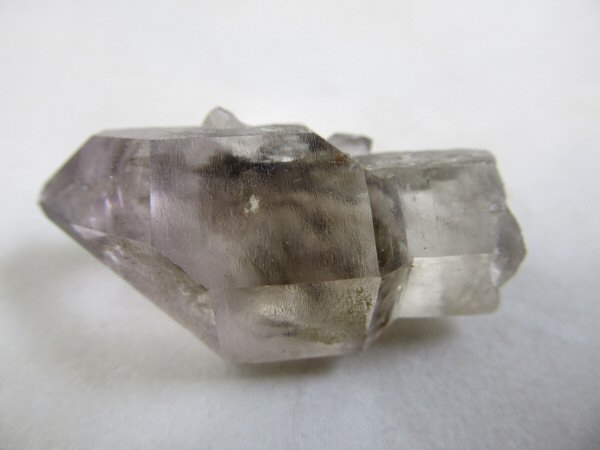
Another beautiful little smoky amethyst scepter.
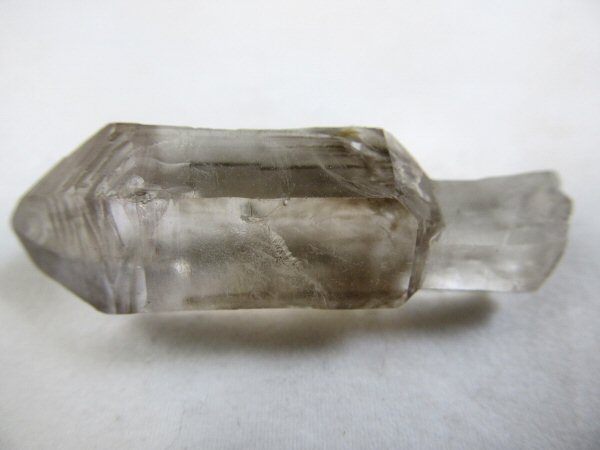
A third smoky scepter with distinctive growth lines on the facets – a signature of Crystal Park.
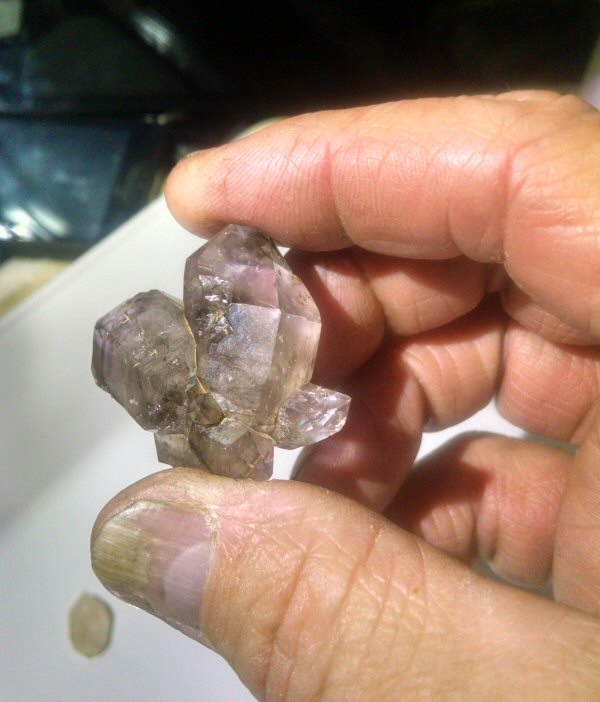
Here’s one dug by Kevin and Norma McDonald on a subsequent 2016 trip to Crystal Park.
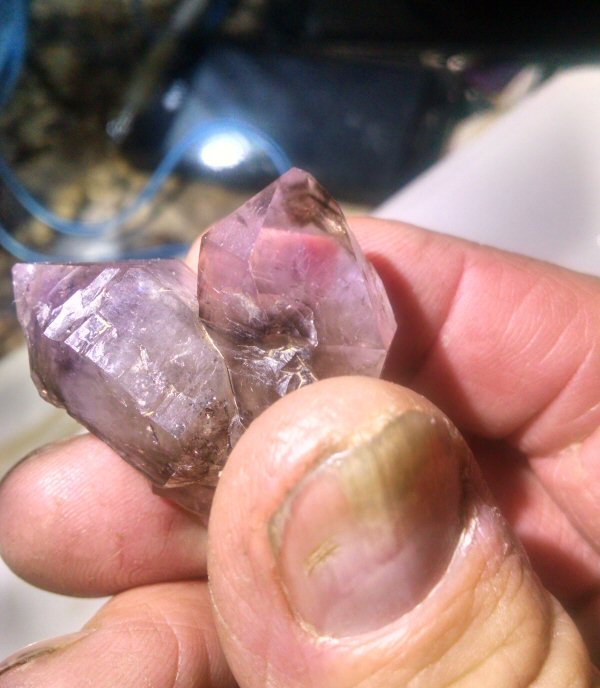
It’s a super nice little star-shaped crystal with smoky amethyst points shooting out in all directions.
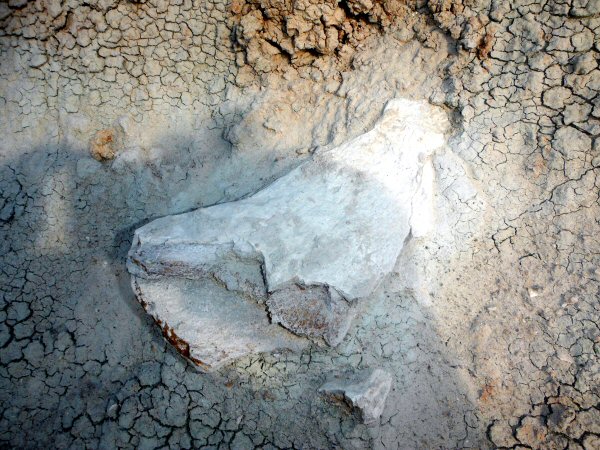
Meanwhile, in South Dakota, locals have shown the group a site where Jurassic age dinosaur bones are weathering out of a clay badlands type formation. It’s illegal to collect vertebrate fossil on public land, and in this instance the bones are extremely friable and would basically fracture into hundreds of pieces if handled. It’s a look only site, but what a wonder to see this type of fossil bed.

Over at Teepee Canyon, the group has exposed a large formation that is ripe with rounded nodules. Note the red agate showing at the bottom of the photo.
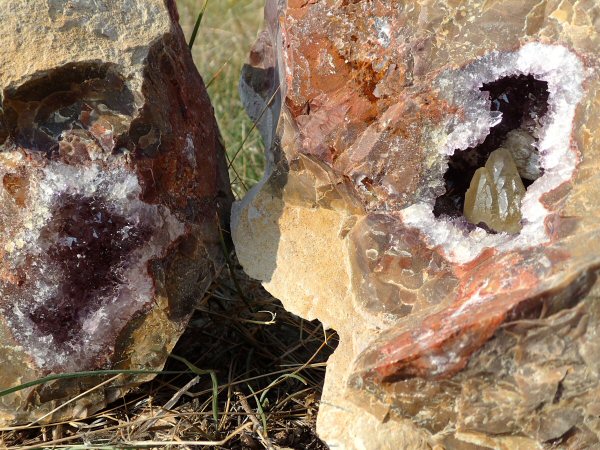
Then the fantastic happens! Kevin Rust randomly splits a nodule to check for red agate and reveals an inner amethyst chamber with perfect golden calcite crystal perched in the middle!
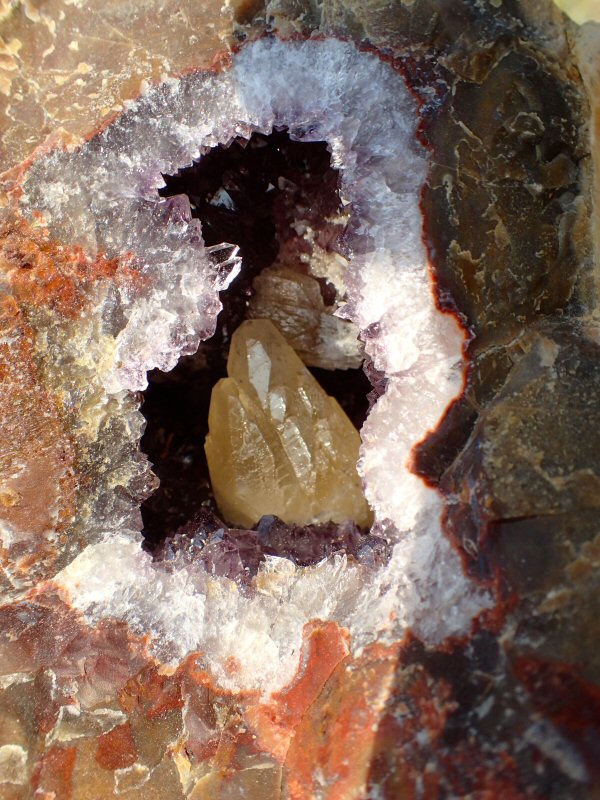
How cool is that?
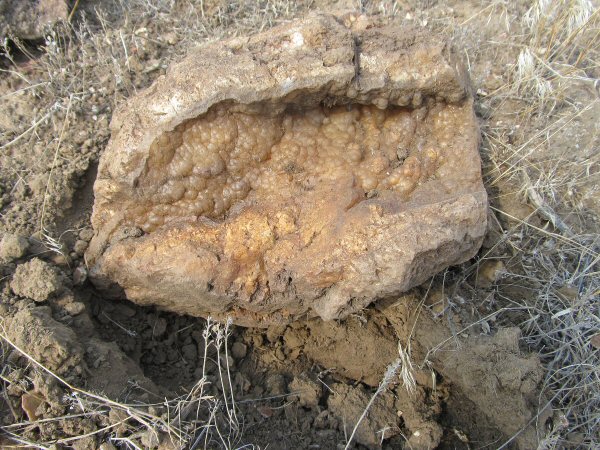
I can’t stop rockin! On my way through Eastern Oregon, I stop at my favorite white plume agate site along Stinkingwater Creek. Within 15 minutes I find this 12 inch botryoidal beauty with white plume. There’s a ton more here just waiting for you. Happy rockhounding! May your luck run strong, and your buckets fill fast!
